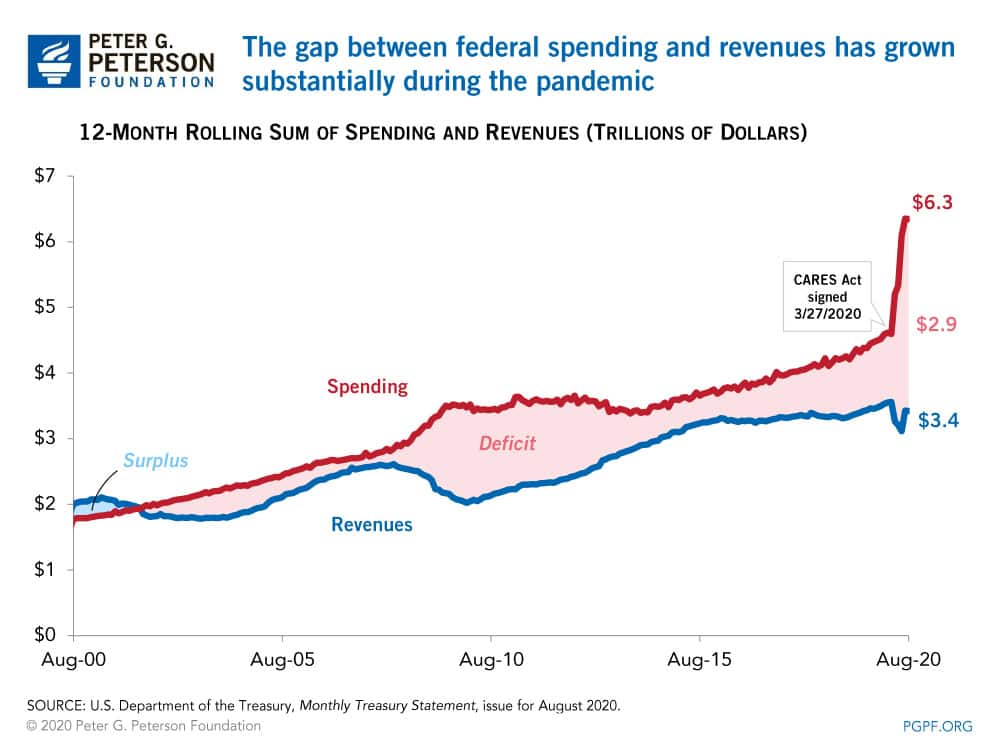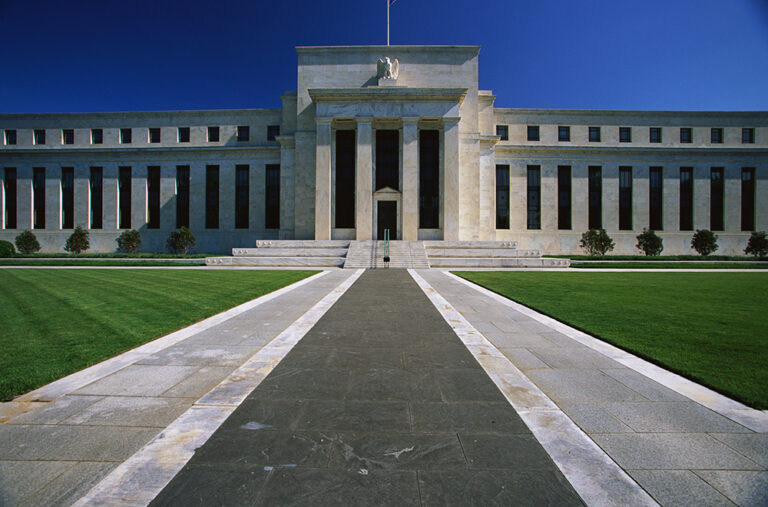The economic disruption caused by the coronavirus (COVID-19) pandemic and the federal government’s response to it has widened the gap between spending and revenues in the budget. The growth in spending has been driven by legislative actions, particularly provisions in the Coronavirus Aid, Relief, and Economic Security (CARES) Act such as Economic Impact Payments, the Paycheck Protection Program, and additional unemployment compensation.
Provisions in the CARES Act and the Families First Coronavirus Response Act also diminished revenues sharply by deferring some payroll taxes, creating tax credits for employers to retain workers and provide sick leave, and allowing greater use of losses to offset taxable income. The recent uptick in revenues mostly reflects activity that would have occurred earlier in the year if the Administration had not postponed the tax-filing deadline.

An Unsustainable Fiscal Future
The rapid increase in the gap between revenues and spending is not surprising given the devastating effects of the pandemic and the necessary fiscal response. However, the underlying structural gap is an issue that lawmakers will need to consider once the crisis has abated.
Learn more about the fiscal challenges that the U.S. was facing before the pandemic.
Image credit: Chip Somodevilla/Getty Images
Further Reading
What Are Interest Costs on the National Debt?
Interest costs are on track to become the largest category of spending in the federal budget.
Healthcare Costs Are a Major Driver of the National Debt and Here’s the Biggest Reason Why
One of the largest drivers of that rising debt is federal spending on major healthcare programs, such as Medicare and Medicaid.
House Reconciliation Bill Would Add Trillions to the National Debt
The bill would increase debt by $3.0 trillion over the next 10 years, driving it from nearly 100 percent of GDP now to 124 percent of GDP by 2034.


